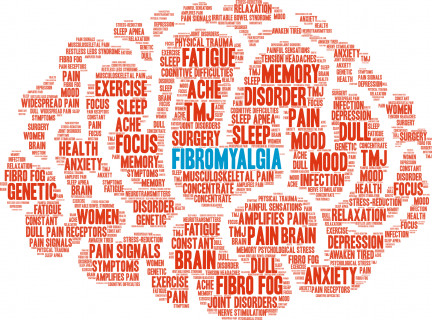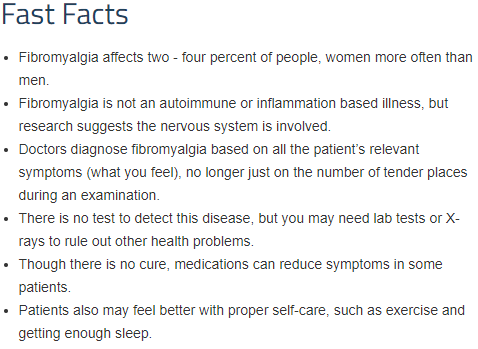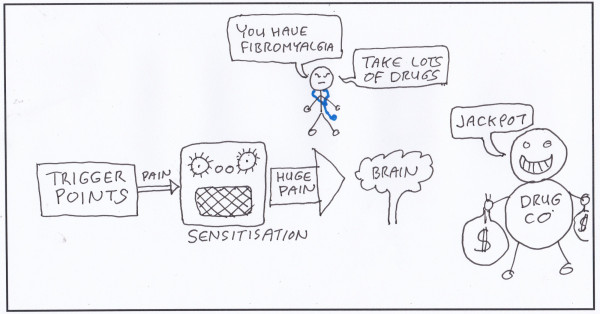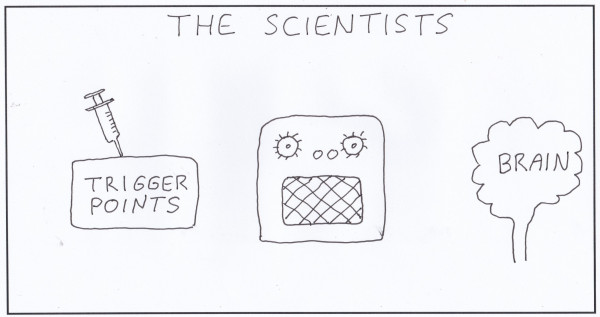
Summary
When we look at the root cause of fibromyalgia we need to look at two levels:
- the malfunction of the nervous system which causes the symptoms, and
- what causes that malfunction.
The cause of the symptoms
Although the cause of fibromyalgia is said to be unknown, scientists in general terms understand that the symptoms are caused by a sensitisation of the nervous system causing it to act like an amplifier. Because of this normal stimuli becomes painful and pain becomes much worse. Also, because the nervous system control practically everything in your body it can cause a host of seemingly unrelated symptoms.
The cause of the malfunction (Sensitisation)
Your nervous system is extremely complex and processes a wide range of information, so it’s function can be affected by a wide range of things ranging from diseases and chemical imbalances through to emotional stress. Any of these is capable of causing your nervous system to become sensitised. However, scientists have found that by far the most common cause of the sensitisation that causes the symptoms of fibromyalgia is the nervous system being bombarded by long standing pain from other sources. This can be something like an arthritic joint but is usually is other forms of musculo-skeletal pain such as un-diagnosed or inadequately treated (myofasical) trigger points.
Treating the cause of the symptoms
In general, medical treatment for fibromyalgia is targeted at the cause of symptoms- the sensitisation. Your nervous system is incredibly complex and of course you can’t just reformat it and load up a fresh operating system like you’d do with a computer, but the medics have a wide variety of chemicals they use that have general effects. For example, they’d have chemicals that generally slow things down to lower the sensitivity, but of course this will slow a lot of other things down too.
Treating the cause of the malfunction (sensitisation)
The good news is scientist have found that if you remove the cause of the sensitisation your nervous system will tend to re-program itself and go back to normal. They’ve actually done this in a clinical trial and found that it relieved the symptoms of fibromyalgia. Medics recognise and use this to a limited extent. For example they may identify a “trigger” such as emotional stress that may be contributing to the sensitisation. However, scientists have found that the major cause of sensitisation by far is un-diagnosed and poorly treated (myofascial) trigger points.
In this article
In this article we’ll go over how sensitisation occurs and the details of how the scientists remedied fibromyalgia by treating the trigger points. The most importantly we’ll give you some practical advice which may help remedy your own fibromyalgia.
What is fibromyalgia

Fibromyalgia is a collection of symptoms including wide spread pain for which no cause can be found. Although a diagnosis of fibromyalgia gives the impression that doctors have found your problem and understand it, it actually means all their tests have come back negative so they really don’t know what’s going on. However they have a name to give it so it sounds like they do, and a shopping list of drugs and a shopping list of drugs and therapies they can use to try and relieve the symptoms with (1–4). This may sound hard to believe, but is confirmed by this excerpt from the American College of Rheumatology website. The good news though is that scientists do have a much better understanding.
What the scientists have found

Sensitisation of your nervous system
This diagram shows you what generally happens with fibromyalgia. You can see that the nervous system is acting like an amplifier. A small amount of pain is going in but the volume is turned way up so it feels really bad. Also, as the nervous system controls practically all your body’s functions you get can get some seemingly unrelated symptoms (5–9).
In the diagram it has trigger points as the source of the pain. This is by far the most common. However, it can be almost anything that causes pain or stress to your nervous system. For example this may be an arthritic joint or even prolonged psychological stress or trauma. A similar thing can happen more localised where prolonged pain from a repetitive work injury will sensitise that area making symptoms much worse.
What are trigger points and why are they by far the biggest cause of sensitisation
Trigger points are those tender lumps in your muscles that therapists find. For more information please see our Complete guide to (myofascial) trigger points. The key issue though is that they are extremely common and arguably the biggest cause of musculo-skeletal pain such as back neck and shoulder pain. The reasons they are able to bombard your nervous system with pain for such long periods of time are:
- they are often not diagnosed, and
- they are often inadequately treated.

Trigger points are often not diagnosed
Despite being so common and a massive cause of pain this information usually does not get to doctors. As an example, a study of shoulder pain found that trigger points were the major cause and that treating them gave excellent results (10). Despite this, examples of medical journal articles on how to diagnose and treat shoulder pain make no mention of trigger points (11–13). Instead doctors are advised prescribe drugs and therapies that do not address the problem. This is very bad for people with shoulder pain, but great for drug companies.
Trigger points are often inadequately treated
Prescribing pain killing drugs obviously does not address the trigger points, but what happens when they are identified and treated with therapies such as needles, laser or one of the many manual therapies? As we discuss in our article Why trigger points keep coming back most treatments for trigger points merely temporarily relieve their symptoms but do not eliminate the trigger points. As a result the pain eventually comes back, and as scientists have found even when temporarily not hurting points still bombard your nervous system with sub threshold levels of pain (8).

How the scientists successfully relieved fibromyalgia
As this diagram shows, what the scientists did was to inject the trigger points with anaesthetic. As you can see this stopped the trigger points bombarding the nervous system with pain. The nervous system settled down and the fibromyalgia symptoms were relieved (14). Before this trail was done there was a lot of research done to work out how sensitisation was happening and that trigger points were the likely cause. You can read more about this here.
How fibromyalgia typically develops and what you can do about it
Understanding that, lets look at how fibromyalgia commonly develops and what you can do about it.
How fibromyalgia develops
Early stages
In the early stages people develop trigger points which result in typical musculoskeletal pains such as back, neck and shoulder pain. These are typically dealt with by:
- self medicating with pain killers
- doctors prescribing drugs and ineffective therapies
- trigger point therapies that only provide temporary relief
Middle stages
As the trigger points continue to develop pain worsens, and becomes more constant and widespread. Usually similar “treatments” are continued, though as the condition has worsened it needs either stronger or more frequent medication, or more therapy to provide relief. At this although sensitisation is not yet an issue the person still has widespread pain and tenderness due to the trigger points. Even though, as mentioned doctors are not trained to recognise trigger points so having widespread pain with no recognisable cause some doctors will start diagnosing fibromyalgia.
Later stages
After a long period of time the person will have widespread pain due to trigger points, plus his or her nervous system will become sensitised making the condition much more painful and complicated. The doctors were unable to identify and deal with the issues earlier, but now they can tell you that you have this condition called fibromyalgia that has no known cause but a shopping list of symptom relieving drugs they can try.
What you can do about it
The scientists who relieved fibromyalgia by injecting trigger points with anaesthetic have made an extremely valuable contribution. Their research has shown that pain from trigger points is the major cause of the sensitisation, and that by eliminating that pain the nervous system will settle back down.
However, if you have ever had a dental anaesthetic you will understand that anaesthetics wear off after a while. It is completely impractical to keep injecting trigger points with anaesthetics. We have to actually get rid of the trigger points.
As previously discussed, trigger point therapies and treatments too often just temporarily relieve trigger points but do not eliminate them. However, there are effective ways you can deal with trigger points, including very effective treatments that can be self applied which obviously makes them a lot more practical and less expensive. For details please see our article Trigger Point Therapy For Fibromyalgia: Inc. Self Help Advice
References
- Sarac A, Gur A. Complementary and Alternative Medical Therapies in Fibromyalgia. Curr Pharm Des. 2005;
- Lauche R, Cramer H, Haüser W, Dobos G, Langhorst J. A Systematic Overview of Reviews for Complementary and Alternative Therapies in the Treatment of the Fibromyalgia Syndrome. Evidence-based Complement Altern Med. 2015;2015(August).


